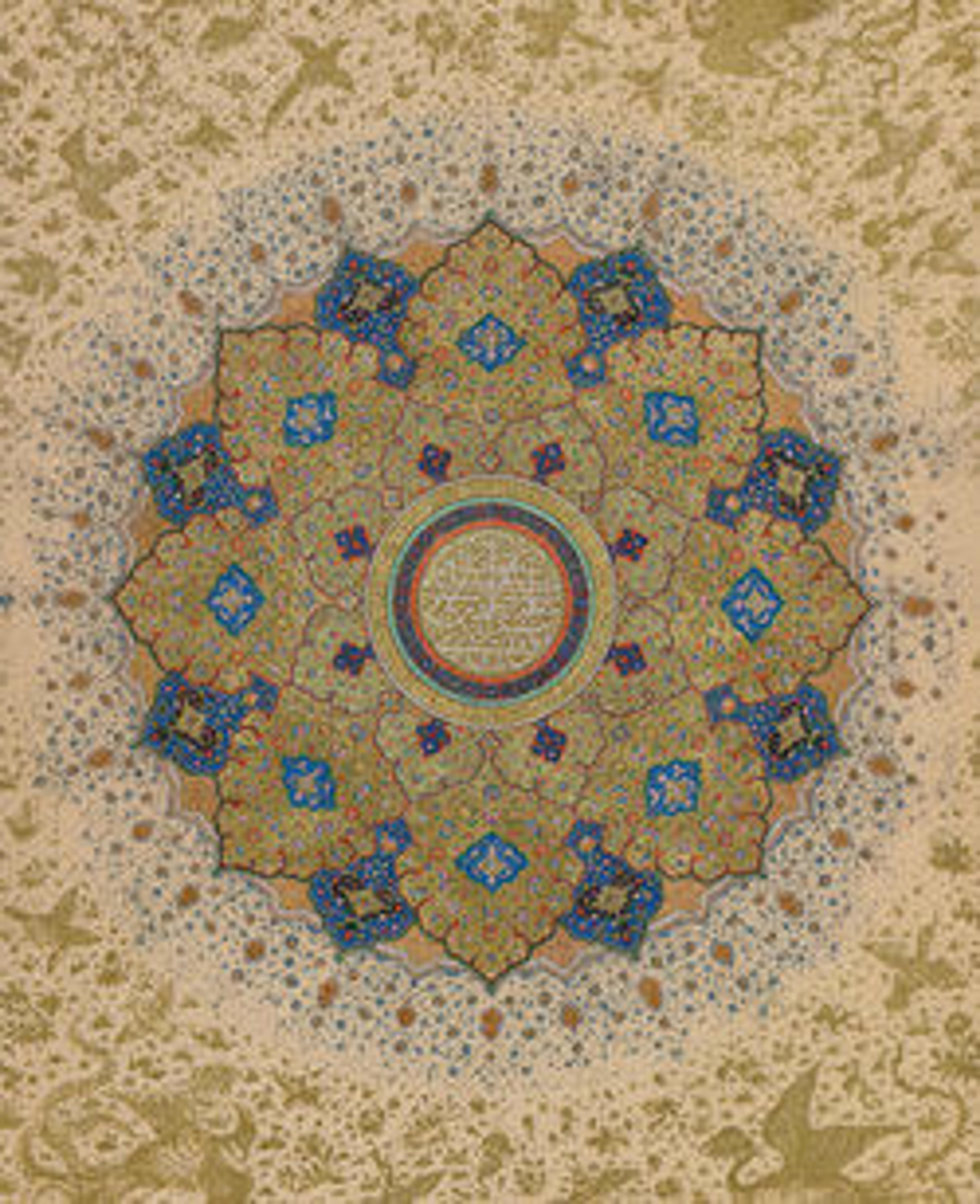Reclining Figure
This figure, elegantly draped over a cushion and dreamily gazing into the viewer’s space, has traditionally been identified as a woman. Not only the leggings with a decorative border, but also the figure’s voluminous thighs, pearl necklace and long hair are all associated with women in the Safavid period. However, the long floppy cap is an article of male clothing and suggests a different reading of this drawing. According to European visitors to Iran in the seventeenth century, youths who "dressed effeminately" were employed in coffeehouses to dance suggestively and serve as prostitutes for the male clientele. Safavid paintings of alluring women invariably emphasize their breasts and often show more skin whereas this figure covers his chest and is fully clothed, relying on his alluring pose to please the viewer or owner of this work.
Artwork Details
- Title: Reclining Figure
- Date: 1630–40
- Geography: Attributed to Iran
- Medium: Ink, watercolor, and gold on paper
- Dimensions: Painting: H. 3 3/4 in. (9.5 cm)
W. 6 15/16 in. (17.6 cm)
Page: H. 3 3/4 in. (9.5 cm)
W. 6 15/16 in. (17.6 cm)
Mat: H. 14 1/4 in. (36.2 cm)
W. 19 1/4 in. (48.9 cm) - Classification: Codices
- Credit Line: Rogers Fund, 1912
- Object Number: 12.223.3
- Curatorial Department: Islamic Art
More Artwork
Research Resources
The Met provides unparalleled resources for research and welcomes an international community of students and scholars. The Met's Open Access API is where creators and researchers can connect to the The Met collection. Open Access data and public domain images are available for unrestricted commercial and noncommercial use without permission or fee.
To request images under copyright and other restrictions, please use this Image Request form.
Feedback
We continue to research and examine historical and cultural context for objects in The Met collection. If you have comments or questions about this object record, please contact us using the form below. The Museum looks forward to receiving your comments.
